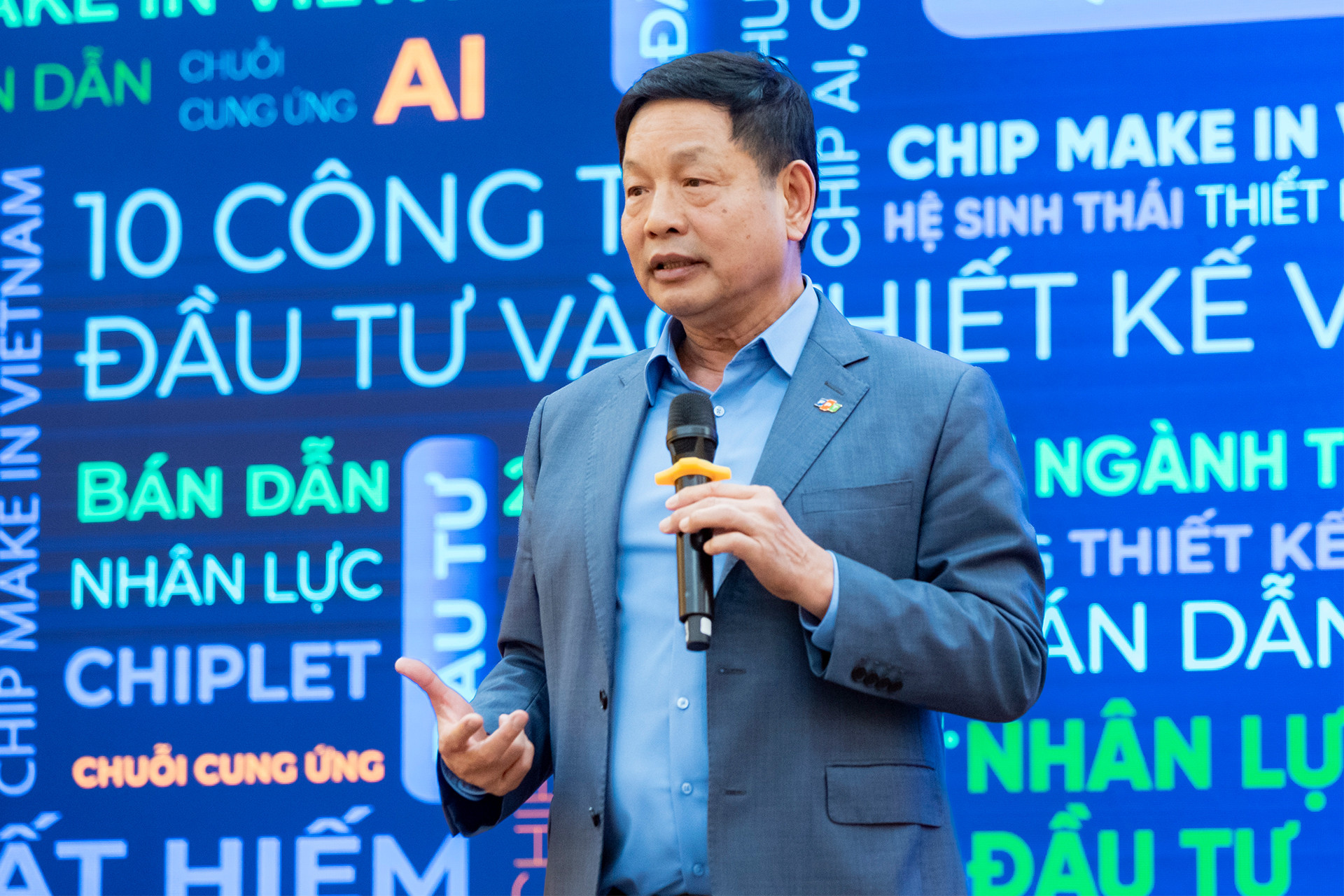
A seminar titled “A new chapter for the semiconductor industry – Vietnam’s opportunities,” co-organized by VINASA and the Semiconductor Industry Development Committee was held several days ago, discussing the latest trends and reports on the semiconductor industry.
Speaking at the seminar, Binh said that over 25 years ago, FPT, a pioneer in the “Go Global” movement, entering the world market in the 1990s, was alone in its efforts due to the lack of a broader push for software exports, causing Vietnamese businesses to lag in technological globalization.
FPT also missed early opportunities to invest in semiconductors, though its leaders had visited Taiwan (China) and recognized the industry’s potential. Now, Binh said, “FPT will not repeat those mistakes again.”
Binh noted that FPT has identified five strategic technology pillars: AI, Semiconductors, Automotive, Digitalization, and Green Technology, with AI and semiconductors as the backbone of the digital future.
“Semiconductors are the food of the digital era. The world will need chips like humans need food,” he said.
AI is seen as the oil and gas of the new era. AI models, particularly AI Edge chip technology, demands high-performance, energy-efficient, and highly accurate chips— a segment where Vietnam can strongly participate.
“We are good at creating small, lean, and precise things, which are exactly what AI on chips needs,” Binh said. “When we talked about AI chips, some were skeptical. But then DeepSeek emerged, proving we’re on the right path.”
According to Binh, while missing the semiconductor opportunity over 25 years ago, Vietnam cannot afford to lag again.
“We didn’t invest in semiconductors despite visiting Taiwan and seeing the potential. FPT will not repeat those mistakes.”
Historic opportunity
Vietnam stands before a significant opportunity to deeply engage in the global semiconductor industry, with two core strengths as its foundation.
First, the country boasts a young, intelligent, and adaptable workforce, eager to learn and master high technology. Beyond capability, this generation carries a burning desire to transform their lives and propel the nation forward through knowledge and innovation.
Additionally, Vietnam’s infrastructure for chip research and design is gradually taking shape. Modern labs are being invested in, creating favorable conditions for Vietnamese experts worldwide to return and contribute to building a high-tech ecosystem.
The other factor that supports the semiconductor industry is the state’s consistent policy. Decision 1131/QD-TTg dated June 12, 2025 clearly establishes semiconductors and AI as two key national technologies, a strong affirmation of the commitment to long-term development in this field.
“I believe 1-2nm technology will continue to develop in the US and Japan. But widely applied technologies like AI Edge chips, which are flexible and lean, must be manufactured in Vietnam. A nation’s prosperity or decline depends on its people. Whether Vietnam becomes a powerful nation and our people prosper depends on us,” Binh said.
This opportunity is becoming clearer through concrete actions. At the event, Tran Xuan Tu, Director of the Institute of Information Technology at Hanoi National University, said: “We have recently held direct talks with TSMC’s leadership, the world’s leading semiconductor manufacturer. They recognize that Vietnam has a clear opportunity to build a chip design ecosystem, from training and research to application.”
The Institute is negotiating educational cooperation with Amkor, a major player in semiconductor packaging and testing.
According to Tu, this collaboration will lay a critical foundation for enhancing Vietnam’s human resource capabilities, particularly in advanced packaging, a key link in the semiconductor value chain.
“I believe that if universities, businesses, authorities, and the community unite, Vietnam can absolutely rise to become a regional hub for semiconductor design and innovation,” Tu said.
At the conference “Developing Human Resources for the Semiconductor Industry” in late April, Prime Minister Pham Minh Chinh said that human resource training is one of five pillars for developing the semiconductor industry, alongside the other four pillars: building infrastructure, improving institutions, mobilizing resources, and developing an ecosystem.
However, training semiconductor human resources in Vietnam currently faces numerous challenges, requiring collaboration among the three parties - the State, universities, and enterprises.
Trong Dat